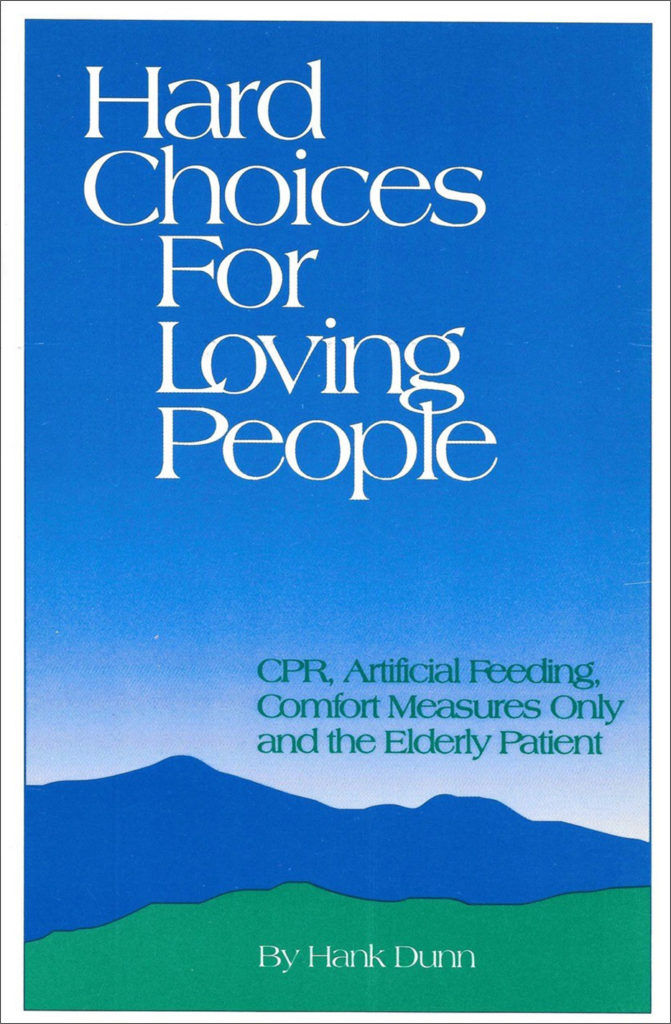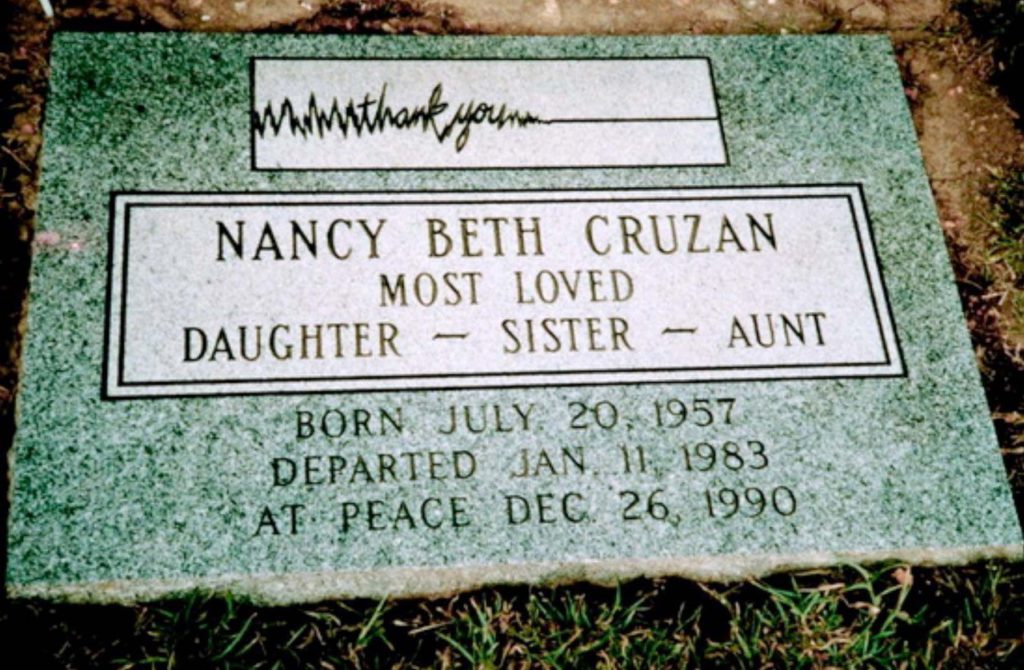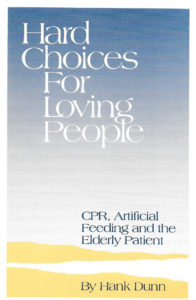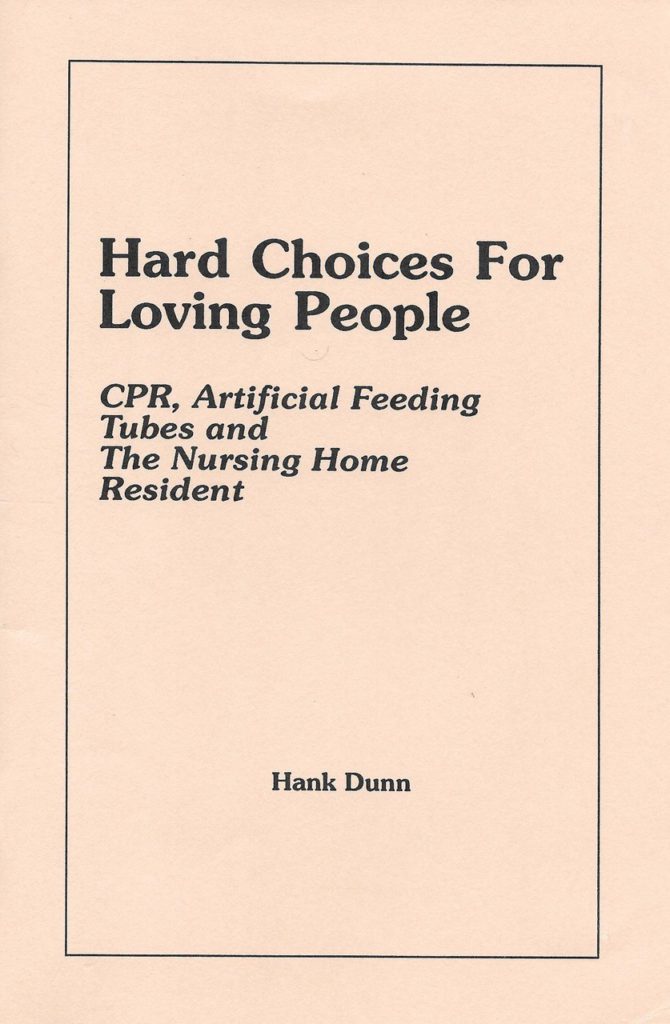This is the third post in a series of articles about the writing and distribution of Hard Choices for Loving People. This piece covers the Third Edition.
With tears in her eyes my friend said, “I have to make a life-and-death decision about my mother.” She didn’t know what to do. The mother was nonresponsive in the hospital and on dialysis. Her mom had said she never wanted to be on dialysis and the physicians caring for her said it was not doing any good.
I said to this distraught woman, “This is not a hard decision. Of course, you take her off dialysis for all the reasons you just gave me. What’s going on here that makes this so difficult?”
She replied, “I guess I am feeling guilty because I haven’t visited mom enough.”
I wrote of this story for the first time in the 1994 Third Edition of Hard Choices for Loving People. In the first two editions I had written just five paragraph about the emotional and spiritual struggles people encounter while making end-of-life decisions. In the third, I expanded this discussion to nine pages, about 20% of the book.
Spiritual and Emotional Concerns Became Important
In my very first blog post, I wrote about how this story became a metaphor for me. For patients and families end-of-life decisions are primarily emotional and spiritual. The expanded Third Edition reflected that new-found emphasis. I also added a fourth question to help with end-of-life decisions: “Can I let go?”
FULL DISCLOSURE HERE: I am a chaplain and tend to see spiritual issues in a lot of places.
A physician requested permission to use JUST the first chapter of my book to help him and his staff guide patients deciding about CPR. I asked him for specifics on how it would be used. He called back a few weeks later and said he no longer wanted to separate out that chapter. He explained, “I told the nurses what I wanted to do, and they said, ‘You can’t do that. You can’t talk about CPR without discussing the emotional and spiritual sides of these decisions.’”
This part of Hard Choices for Loving People has worked well. I was able to present the emotional and spiritual concerns in a way in which anyone could identify. All kinds of facilities have bought the book: Catholic, Baptist, Seventh Day Adventist, Jewish, Methodist, and Presbyterian hospitals and nonreligious organizations including VA-, academic-, and for-profit hospitals.
On the Road Speaking and Moving to Hospice
The wide distribution of Hard Choices for Loving People brought me invitations to go on the road to speak. I presented mostly to professional groups about helping patients and families with end-of-life decisions.
 I also made a job change in 1996, leaving the nursing home and becoming a homecare chaplain with the Hospice of Northern Virginia. I hesitated in taking the job at first. I was concerned that by leaving the nursing home and going to hospice I might lose some authenticity in promoting how to have a peaceful death. I was worried that being a hospice chaplain people might say, “Of course he recommends that patients receive less aggressive care at the end of life — he’s a HOSPICE chaplain. What did you expect?”
I also made a job change in 1996, leaving the nursing home and becoming a homecare chaplain with the Hospice of Northern Virginia. I hesitated in taking the job at first. I was concerned that by leaving the nursing home and going to hospice I might lose some authenticity in promoting how to have a peaceful death. I was worried that being a hospice chaplain people might say, “Of course he recommends that patients receive less aggressive care at the end of life — he’s a HOSPICE chaplain. What did you expect?”
I made the move anyway and I am so glad I did. I cannot say enough good things about my experience as a hospice chaplain. You get to visit with patients and families in their own homes. The team I worked with was the best. Although facing death is still very difficult, just being in hospice made patients and families so much more open to preparing for this last phase of life… and they let me be part of that.
Third Edition Statistics:

- Subtitle: CPR, Artificial Feeding, Comfort Measures Only and the Elderly Patient
- Publication dates: 1994-2001
- Third Edition books sold: 589,163
- Total books sold: 831,842
- Length: 44 pages
- Endnotes: 68
Key content introduced in the Third Edition:
- A fourth question to help with end-of-life decisions
1. What does the patient want?
2. What is in the best interest of the patient?
3. What are the prognosis and probable consequences if a certain treatment plan is followed?
4. Can I let go? If the answers to the first three questions point to withholding or withdrawing treatment, then this is the most difficult question. - New chapter on “Hospice and the ‘Comfort Measures Only’ Order” to help people make a decision regarding hospice and palliative care.
- A list of three possible goals of medical care: 1) Cure; 2) Stabilization of functioning; 3) Preparing for a comfortable and dignified death.
- A section discussing hospitalization for frail, failing, elderly patients.
- Endnotes for healthcare professionals to have confidence that Hard Choices for Loving People was backed up by solid research in medical literature.




